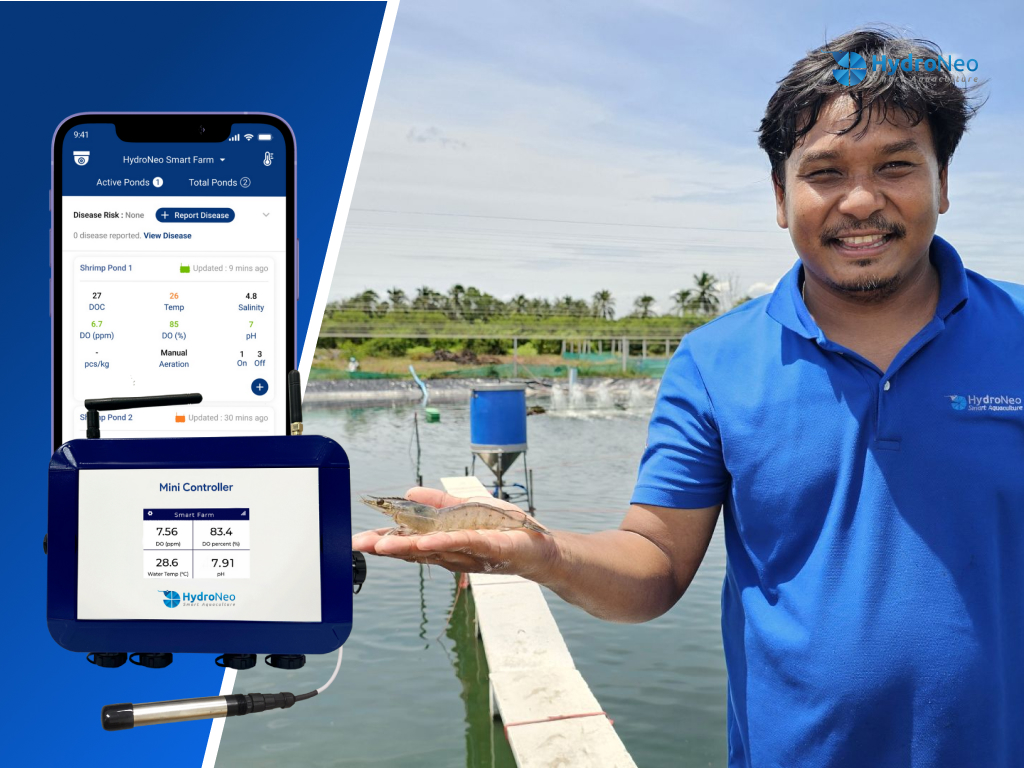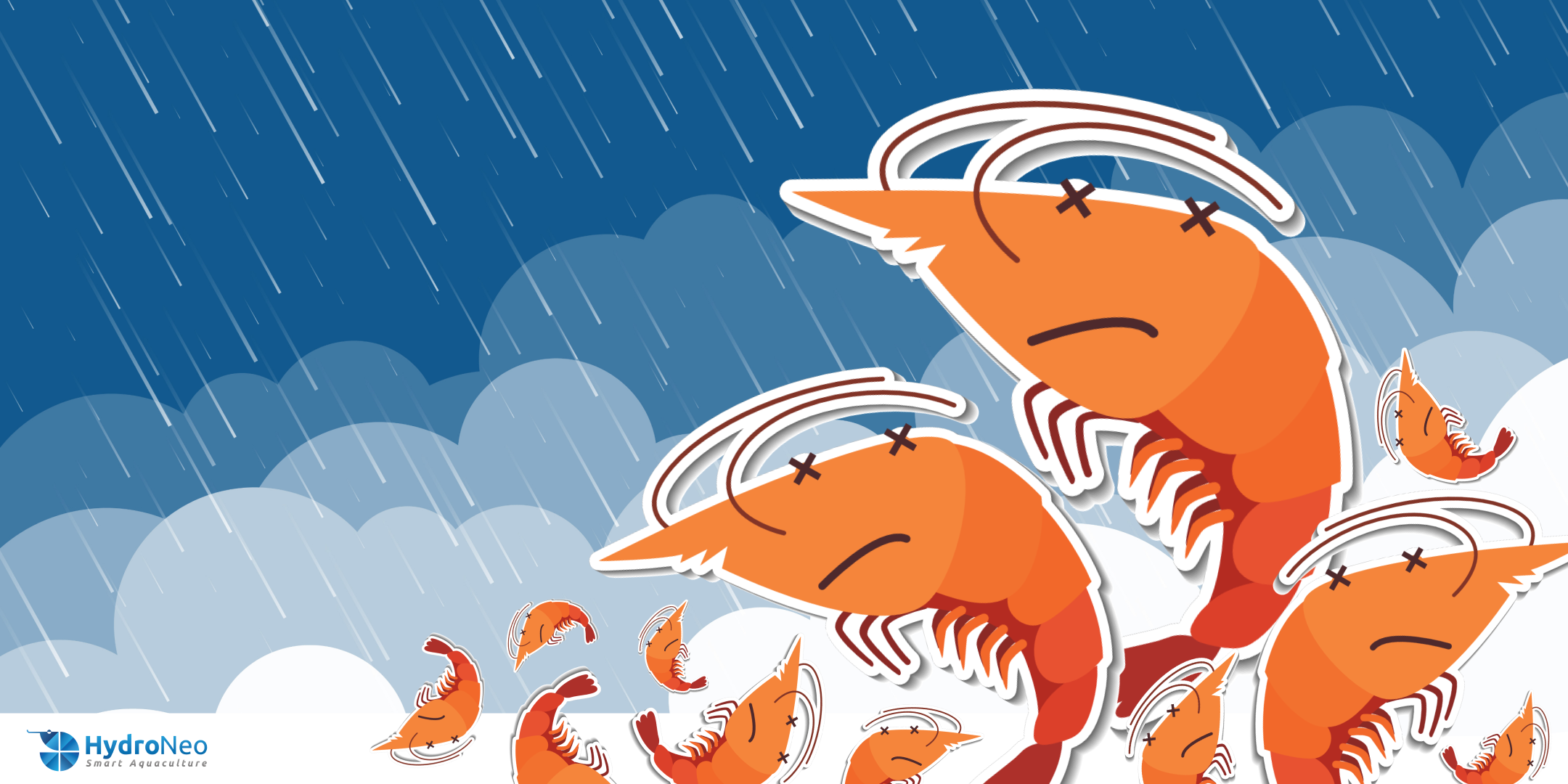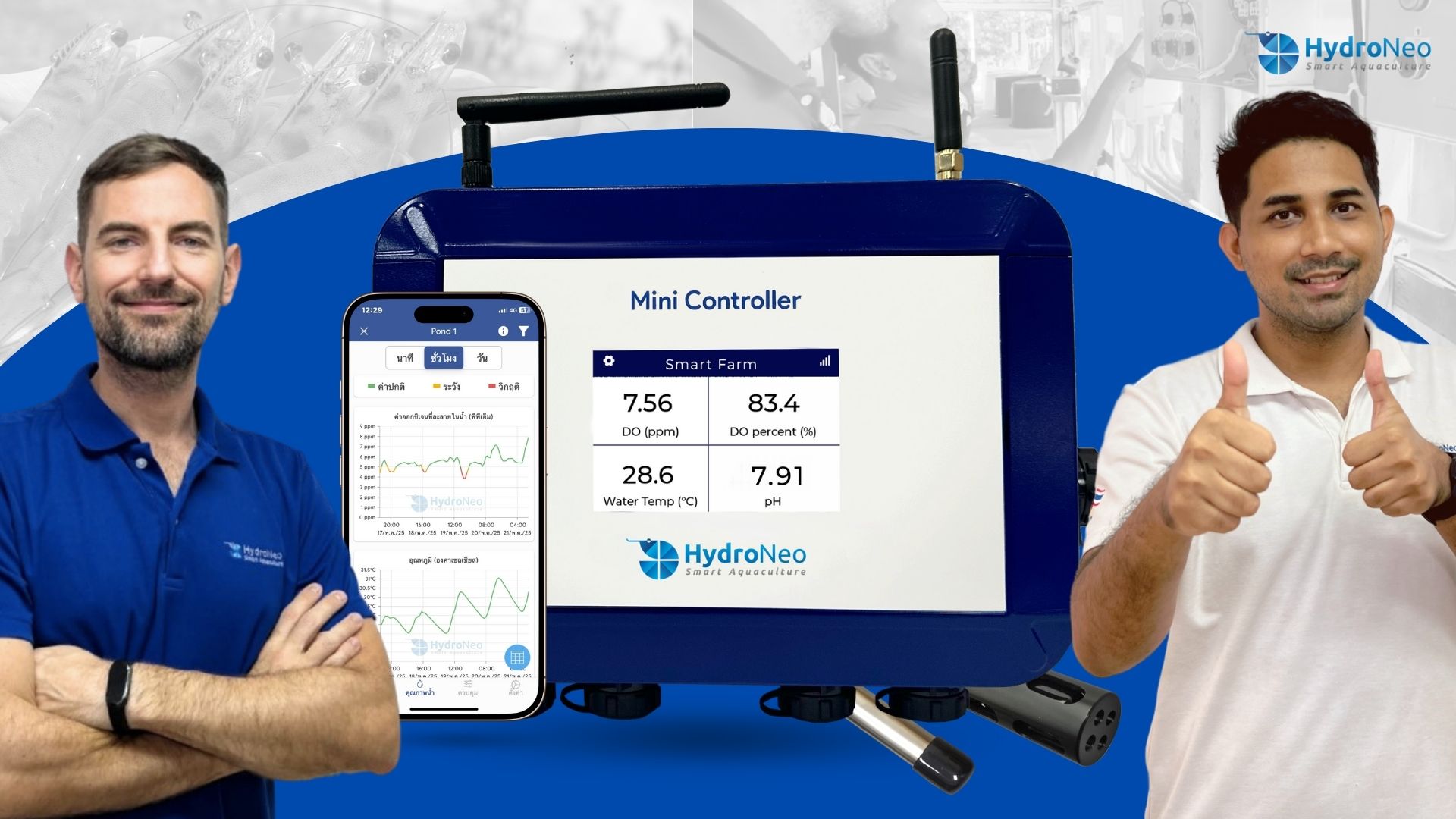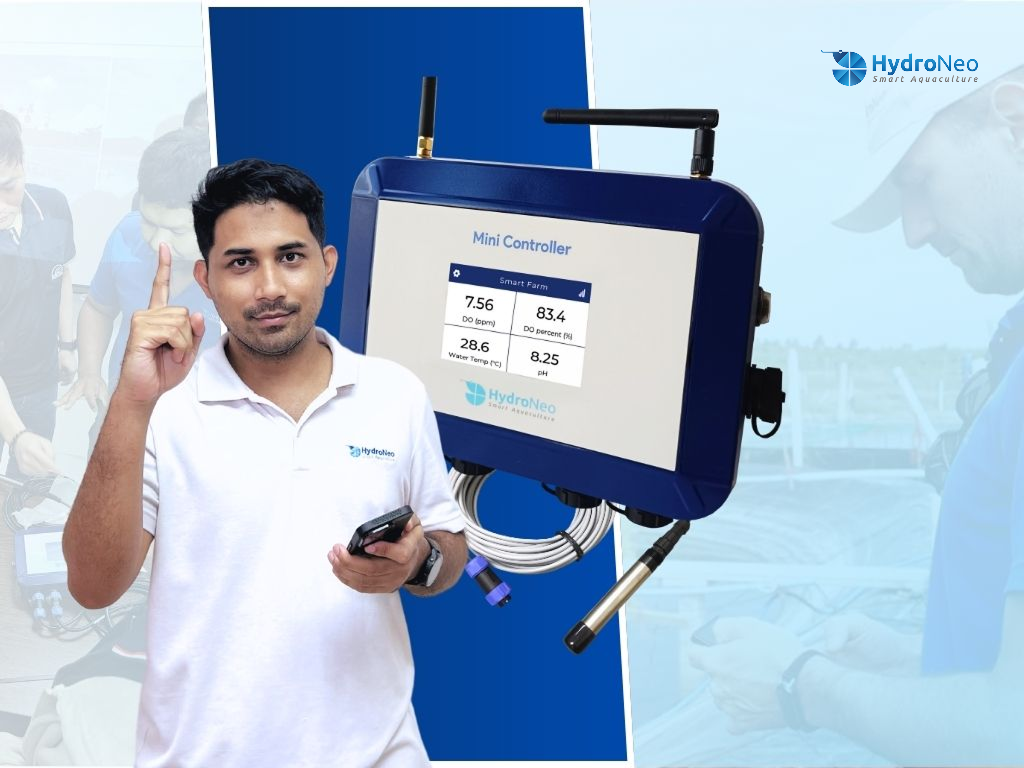The shrimp farming industry faces several challenges, particularly in terms of water quality management, waste accumulation and management, and sustainability in shrimp farming. Photosynthesis is one crucial topic that we need to comprehend to improve shrimp farming sustainability.
Photosynthesis in Shrimp Farming
Photosynthesis refers to the process by which living organisms, which have chlorophyll, use sunlight to convert carbon dioxide into oxygen and organic compounds, found in algae, phytoplankton, and other aquatic plants.
Organisms that undergo photosynthesis in water use up dissolved carbon dioxide and release oxygen to the water, which helps balance the underwater ecosystem by increasing the dissolved oxygen (DO) levels. When phytoplankton thrive due to photosynthesis, they contribute to an increase in the plankton population, resulting in darker water.
Benefits of Plankton in Shrimp Farming
- Water Quality: Photosynthesis by plankton in shrimp farms helps maintain water quality by removing excess nutrients, such as nitrogen and phosphorus, that are released as waste by the shrimp. These excess nutrients can lead to eutrophication, the rapid growth of phytoplankton known as “algal blooms,” and a decrease in dissolved oxygen levels, all of which are harmful to shrimp health.
- Natural Food Source: Many shrimp species consume algae and phytoplankton as part of their diet, especially young shrimp that may not yet efficiently consume pelletized feed. Photosynthesis provides a source of nutrition for shrimp by producing organic matter.
- ออกซิเจนละลายน้ำ (DO - Dissolved Oxygen): Photosynthesis plays a role in replenishing dissolved oxygen in water. Shrimp require oxygen for respiration, and an environment with adequate oxygen levels promotes their growth and overall health. Photosynthesis helps reduce the risk of oxygen depletion (also known as an oxygen drop) and other adverse effects associated with shrimp farming.
A Warning from an Aquaculture Expert
Dr. Chalor Limsuwan, a leading expert in aquaculture from Thailand, issued a warning to Thai farmers, stating, “We have grown accustomed to the idea that when the sunlight is strong, the water turns dark in the afternoon. We assume that the dark color indicates abundant plankton, which produces oxygen for us, and we don’t activate the aerators much.”
“However, as it turns out at night, the shrimp come up to the water’s surface because there isn’t enough oxygen, and many ponds face this problem. This issue is not unique to Thailand; many countries are facing it too.”
“The reason for the low dissolved oxygen levels in the water may be attributed to water temperatures exceeding 32 degrees Celsius, which is higher than the optimal temperature for plankton’s photosynthesis. Achieving efficient photosynthesis is challenging, and these plankton also require oxygen for respiration. Unfortunately, they produce minimal oxygen, leading to a drop in oxygen levels.”
“A ‘surviving pond’ is one equipped with a smart water monitoring system that warns us when oxygen levels fall below a certain threshold. For example, if we set the oxygen level threshold to below 4 ppm, the water pumps will activate automatically, and we will receive notifications on our mobile devices indicating that the oxygen levels are low. In such cases, we can investigate the situation in the pond.”
Essential Role of Photosynthesis in Aquaculture
Photosynthesis plays a vital role in aquaculture, especially in shrimp farming. It supports water quality, provides a natural food source through plankton growth, and helps maintain healthy levels of dissolved oxygen (DO). These factors are all crucial to ensuring strong growth rates, high survival, and profitable yields.
However, natural processes like photosynthesis can fluctuate due to weather, pond conditions, and other environmental variables. That’s where smart water monitoring systems come in.
เพิ่มขีดความสาสมารถด้วยการเพาะเลี้ยงสัตว์น้ำเเบบเเม่นยำ: 24/7 real-time monitoring of dissolved oxygen, farmers can keep track of water quality changes before they become critical. Automated alerts and data dashboards allow you to make informed decisions on when to adjust aeration or manage feeding.
Even better, when integrated with automated aeration systems, smart monitoring tools can maintain ideal DO levels without manual intervention—ensuring your shrimp remain in optimal health around the clock.
Why Smart Water Monitoring is Essential:
-
Real-Time DO Monitoring: Detect oxygen dips immediately to prevent shrimp stress or mortality.
-
Optimize Photosynthesis Efficiency: Keep the pond ecosystem in balance for better natural food and oxygen supply.
-
Automated Aeration Control: Save energy by activating aerators only when needed.
-
Improve Growth & Survival Rates: Maintain optimal conditions that support shrimp development.
-
Eco-Friendly Farming: Reduce chemical usage by relying on balanced natural ecosystems and precise interventions.
HydroNeo’s Smarter Farm Management System
HydroNeo’s Smart Farm Management System offers more than just water monitoring. It includes:
- Risk Reduction: Shrimp farmers can monitor real-time parameters such as dissolved oxygen (DO) levels, pH, and temperature in the shrimp pond, among others. With 24-hour data access, they receive instant alerts when these parameters fall below specified thresholds, enabling prompt corrective actions.
- เพิ่มผลผลิต: Farmers can use the recorded data to make informed decisions about managing their farms, such as adjusting shrimp feeding schedules or adjusting aeration. This data-driven approach helps in planning for the next shrimp cycle.
- Cost Savings: Farmers can adjust dissolved oxygen levels to suit specific aquaculture types, such as shrimp or fish. Automating aerators based on oxygen levels conserves electricity by minimizing unnecessary aeration, which reduces labor costs. Farm owners can access water quality data 24/7 through the mobile application.
- Convenience: Farmers can easily control their shrimp farm operations via a user-friendly app, regardless of their location. The app provides 24/7 notifications and allows them to manage aerators, feeders, and water pumps.
Feel free to CONTACT US and join our Smarter Farmer community, where we promote sustainable farming practices together.









